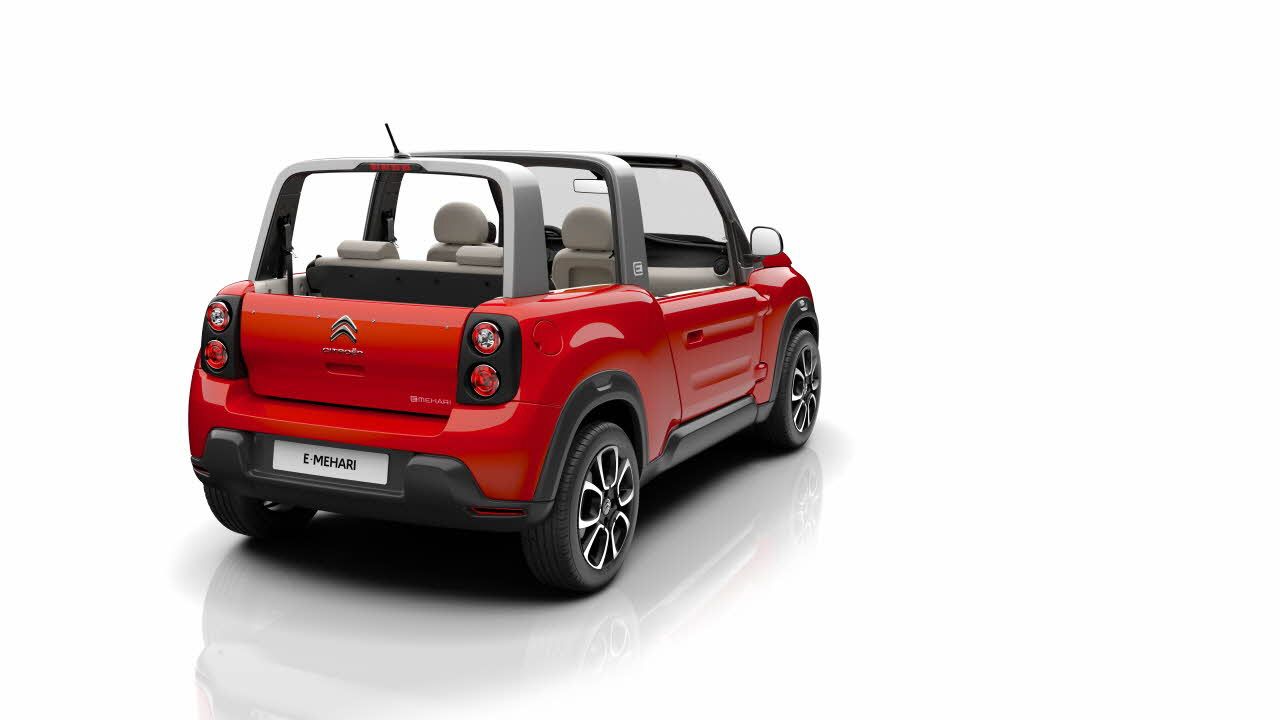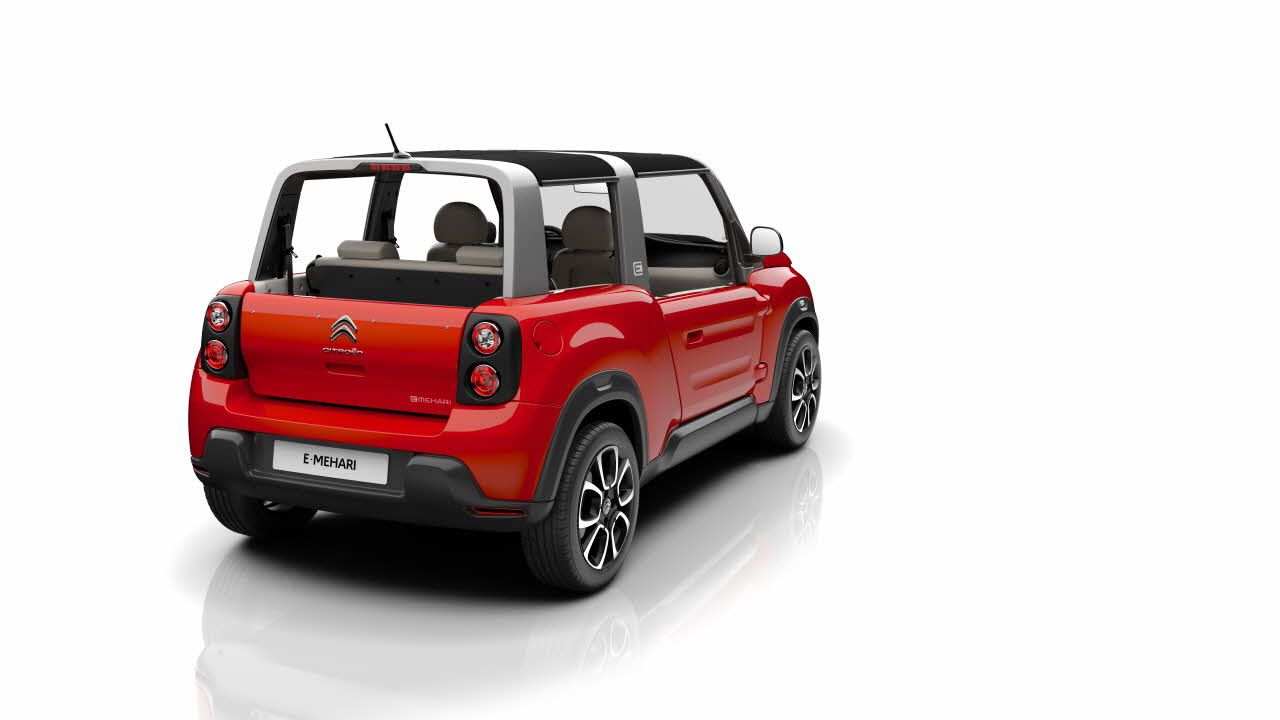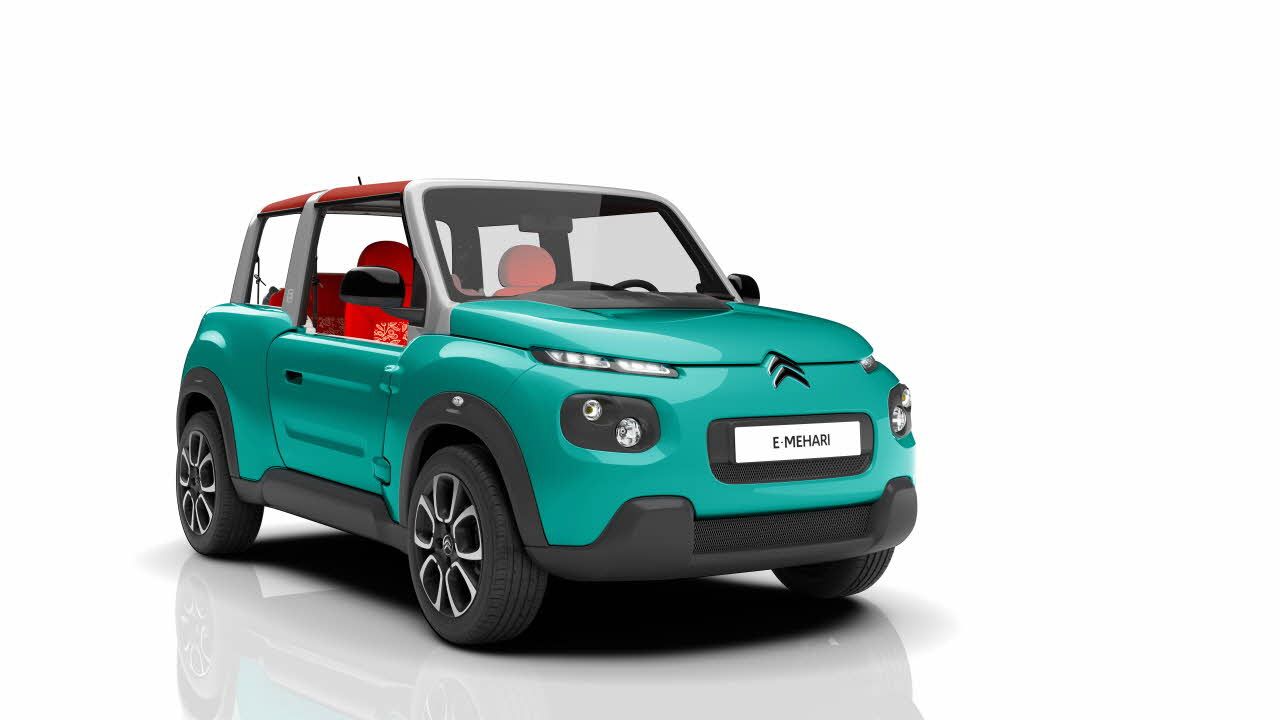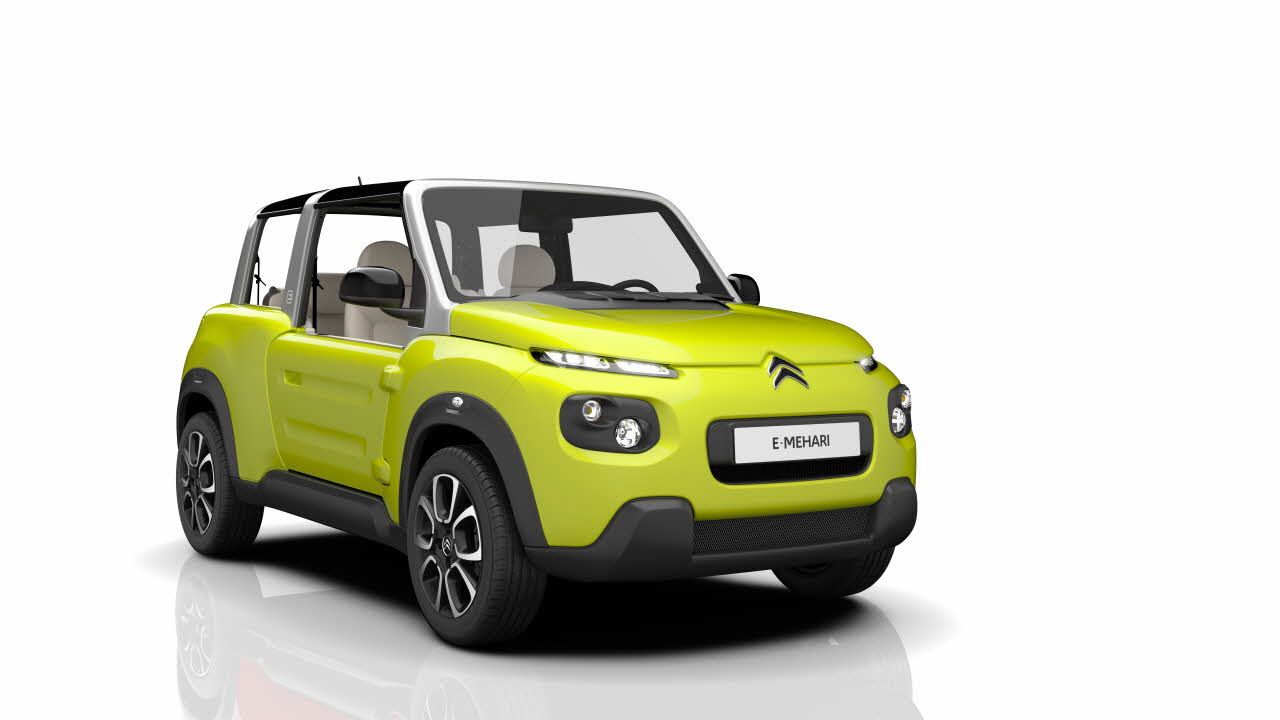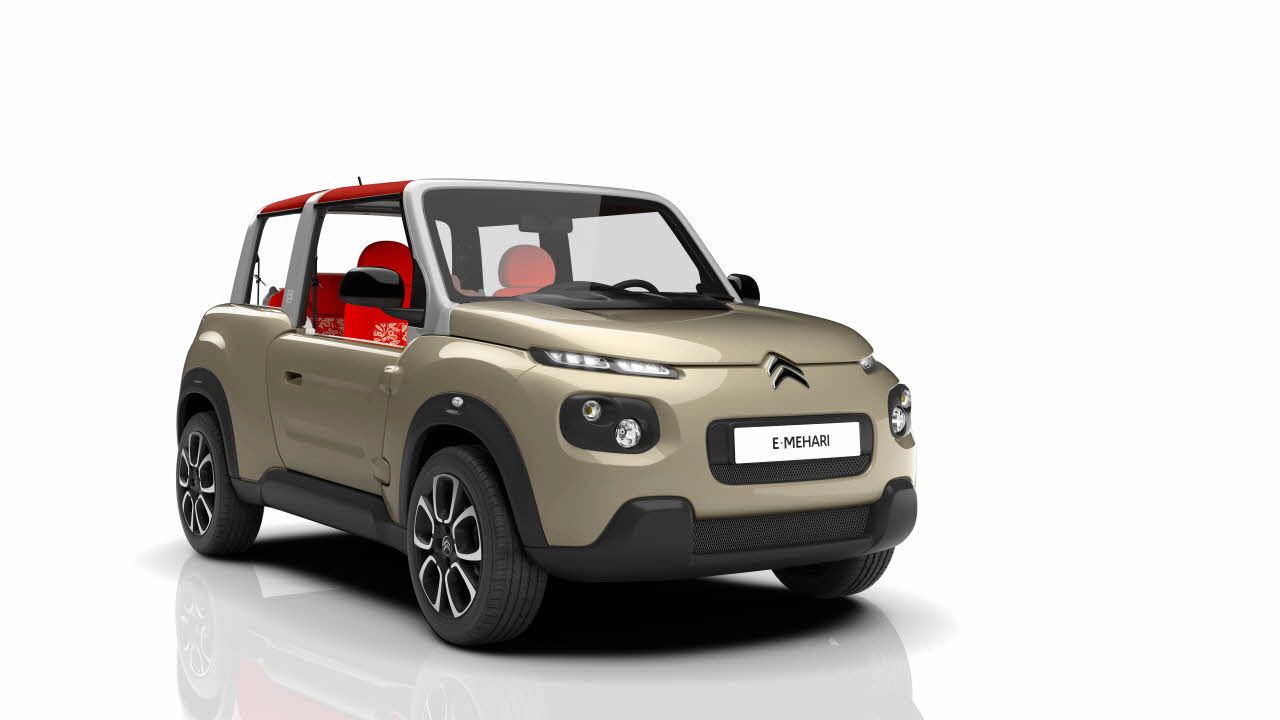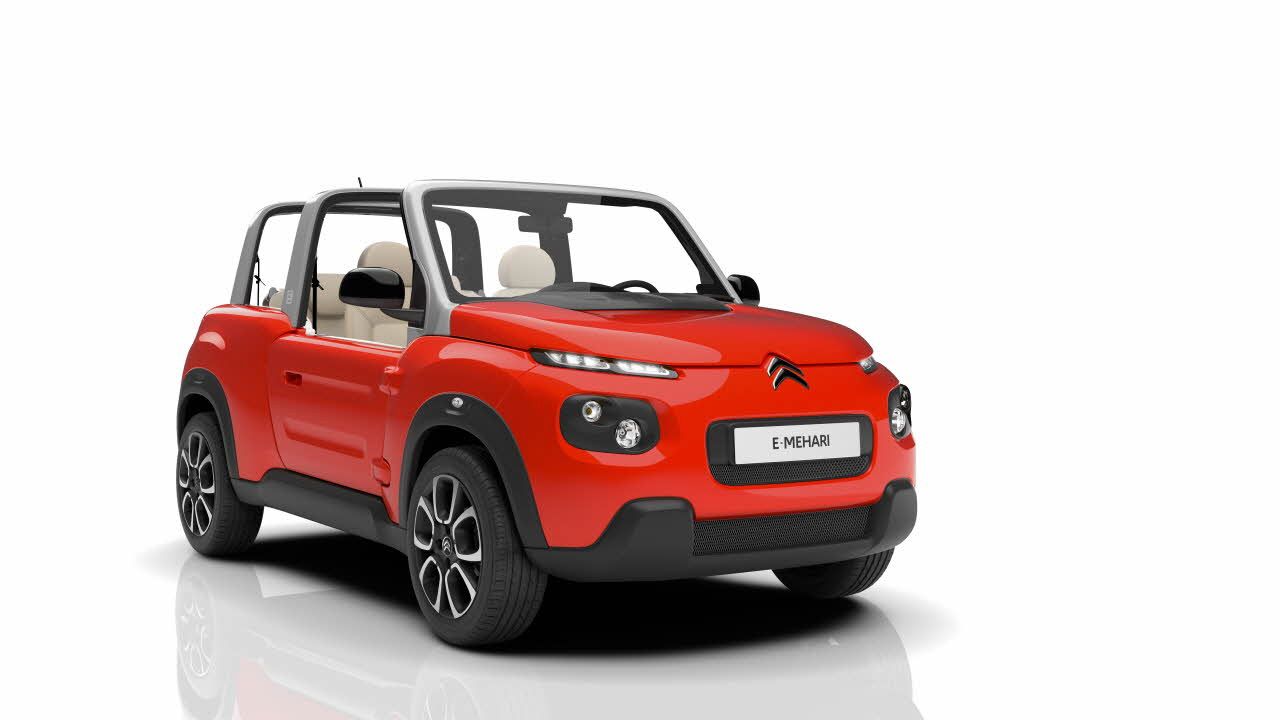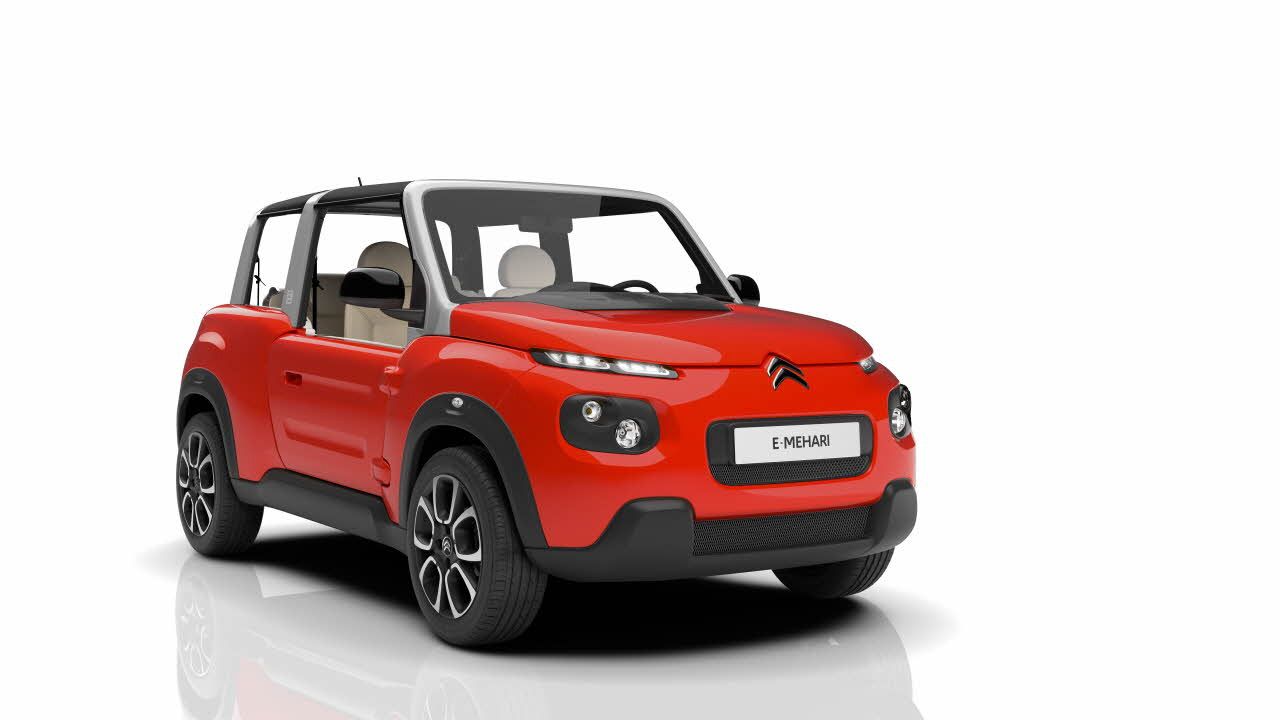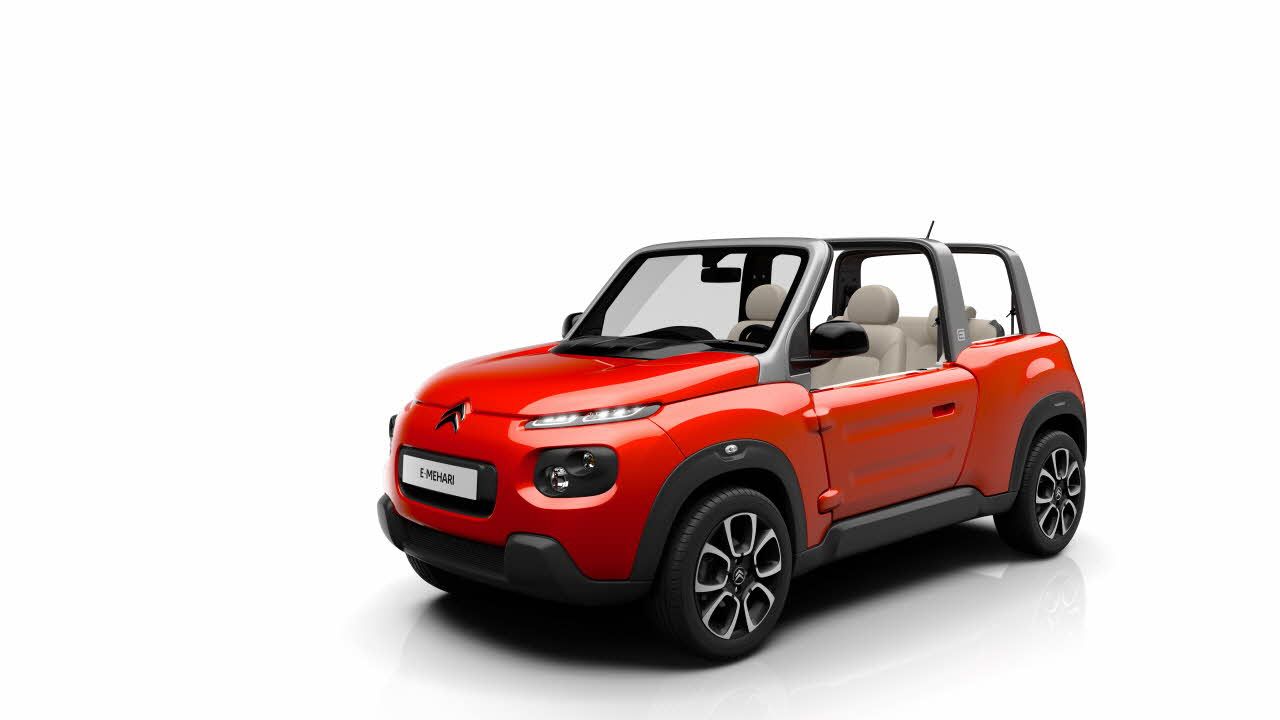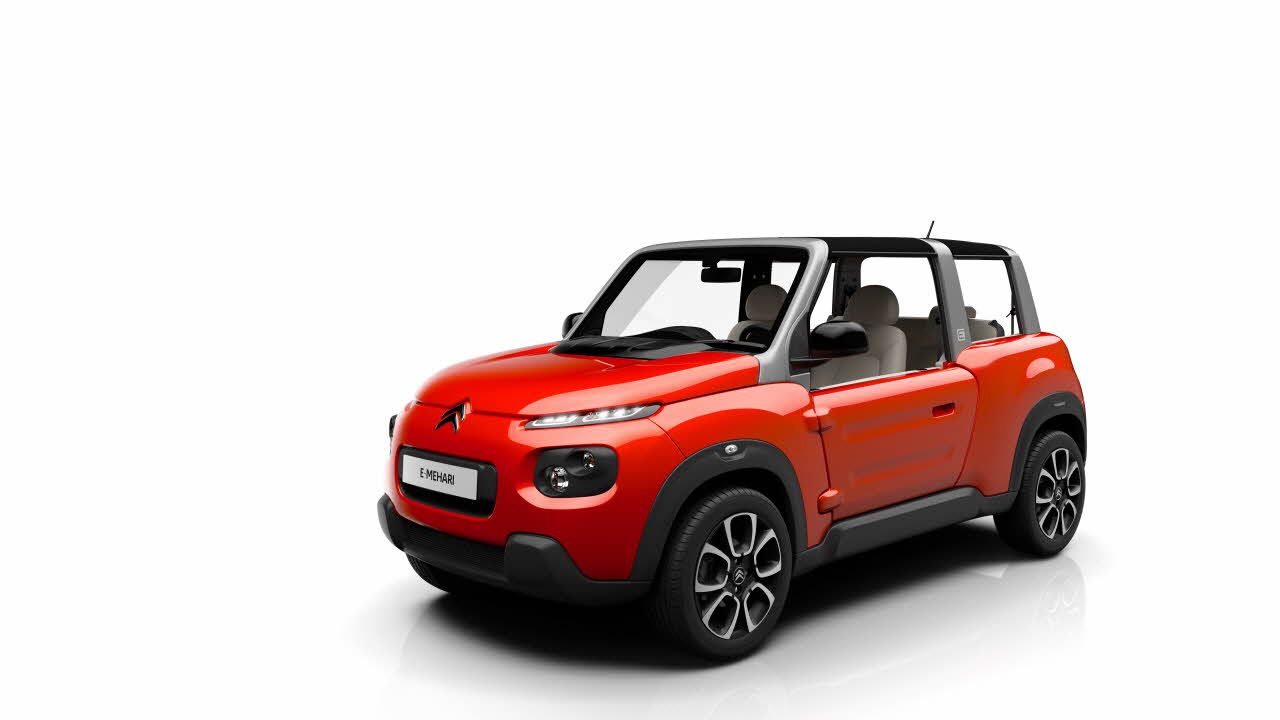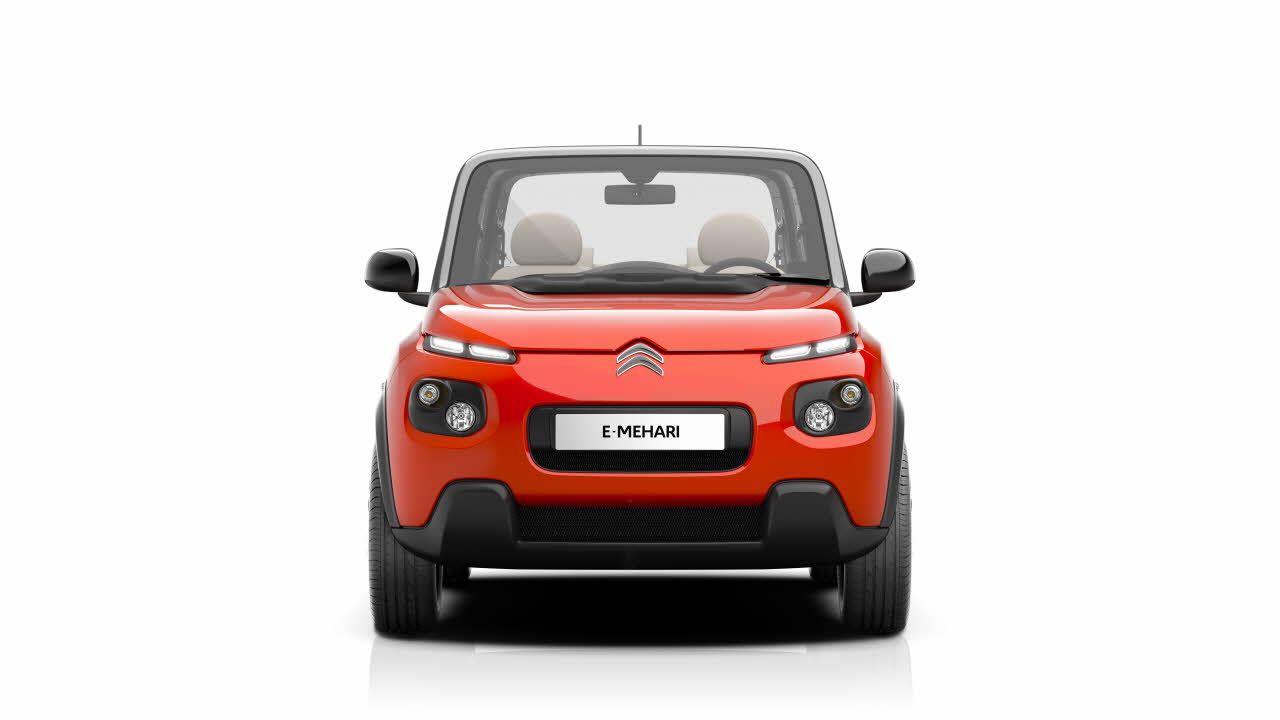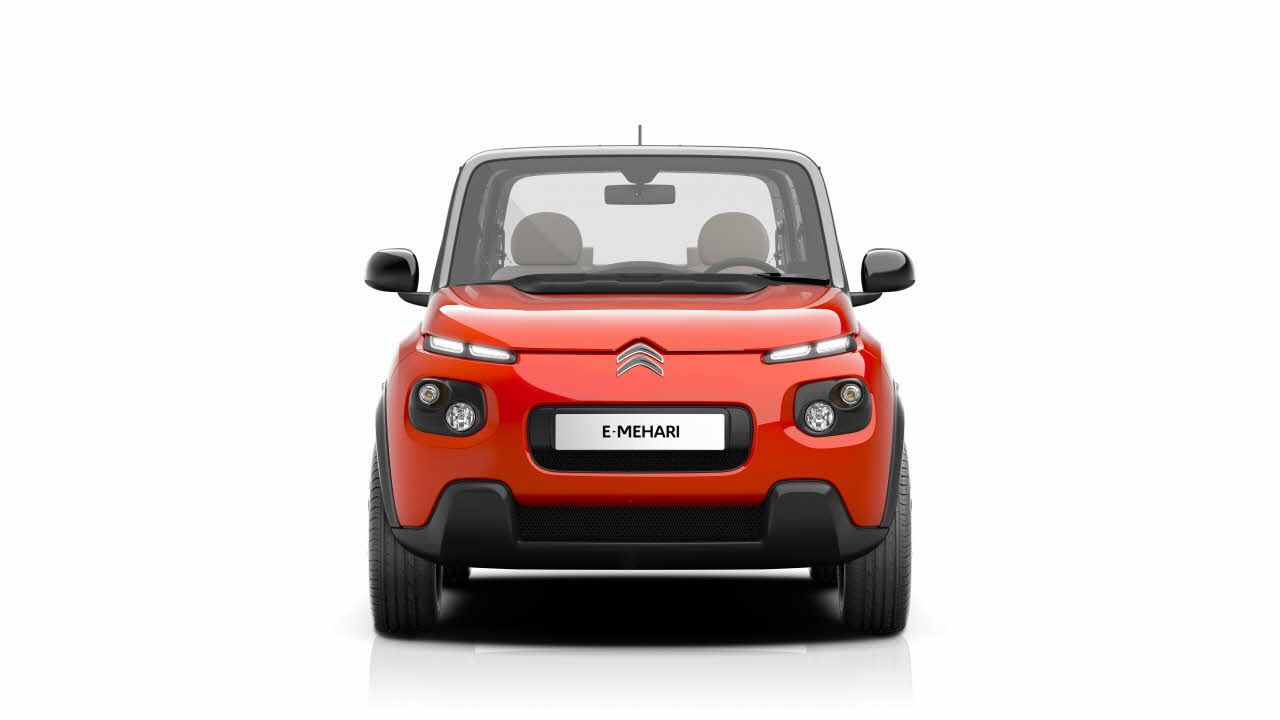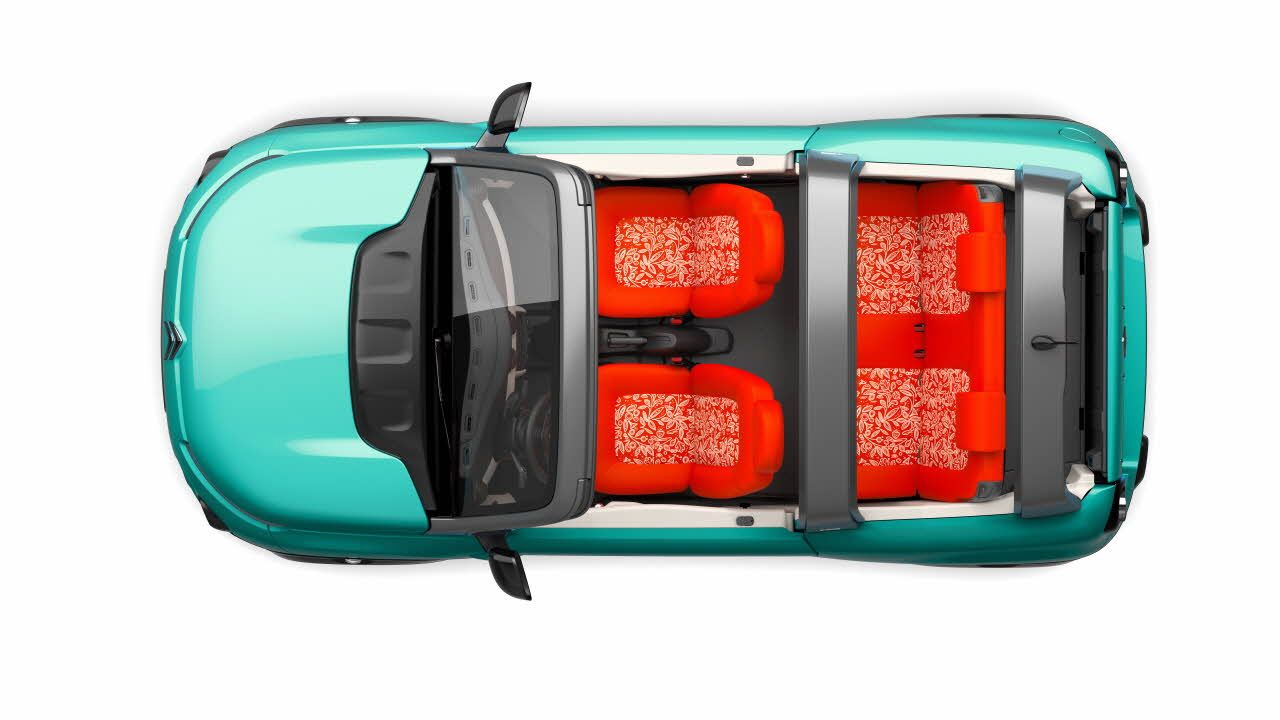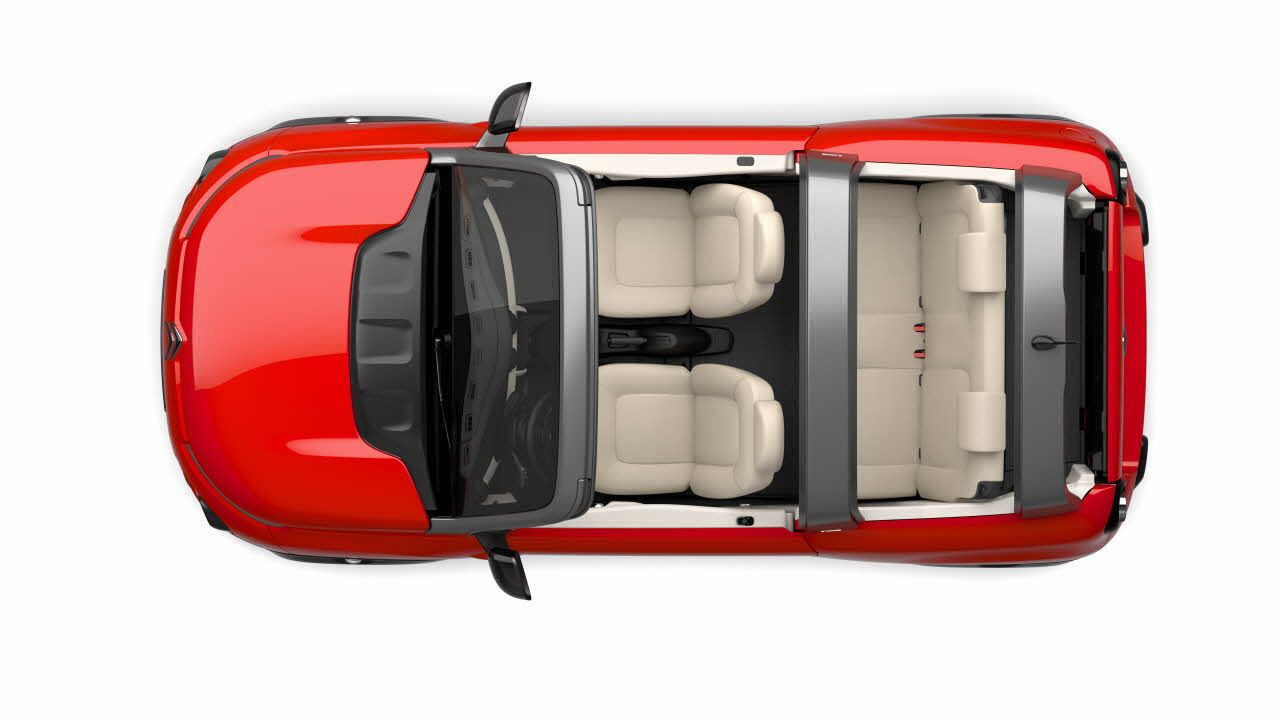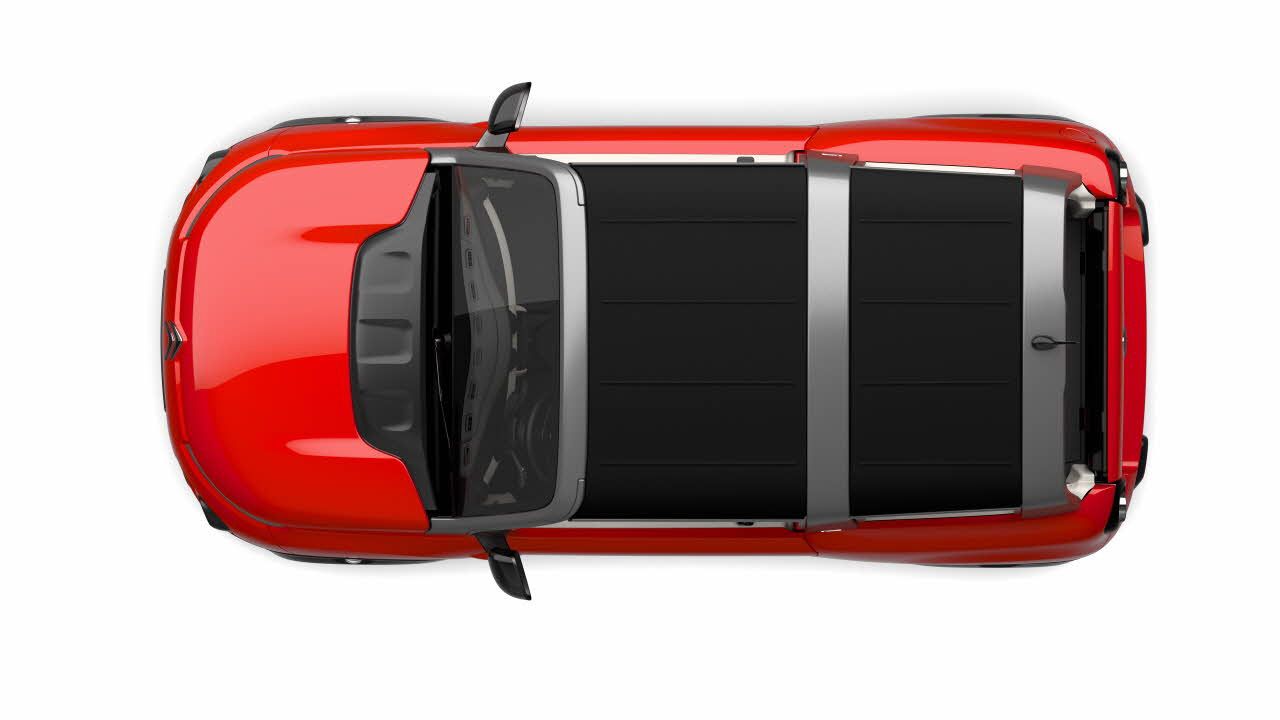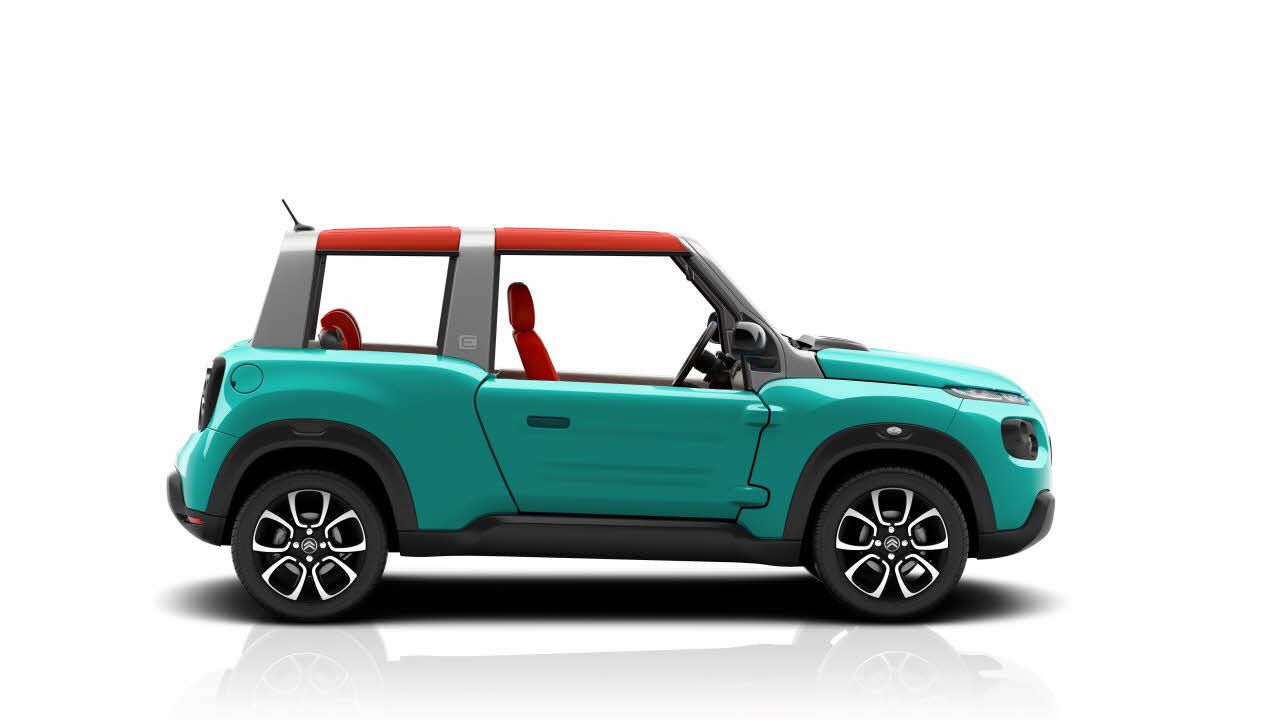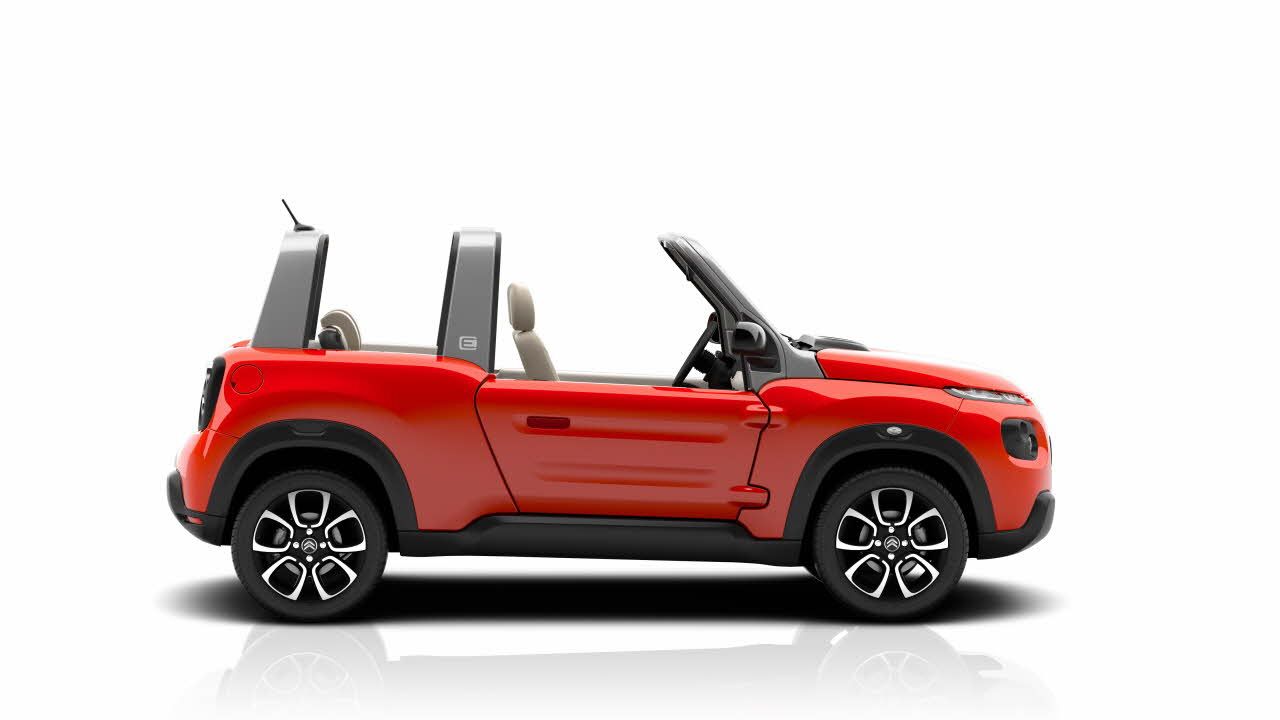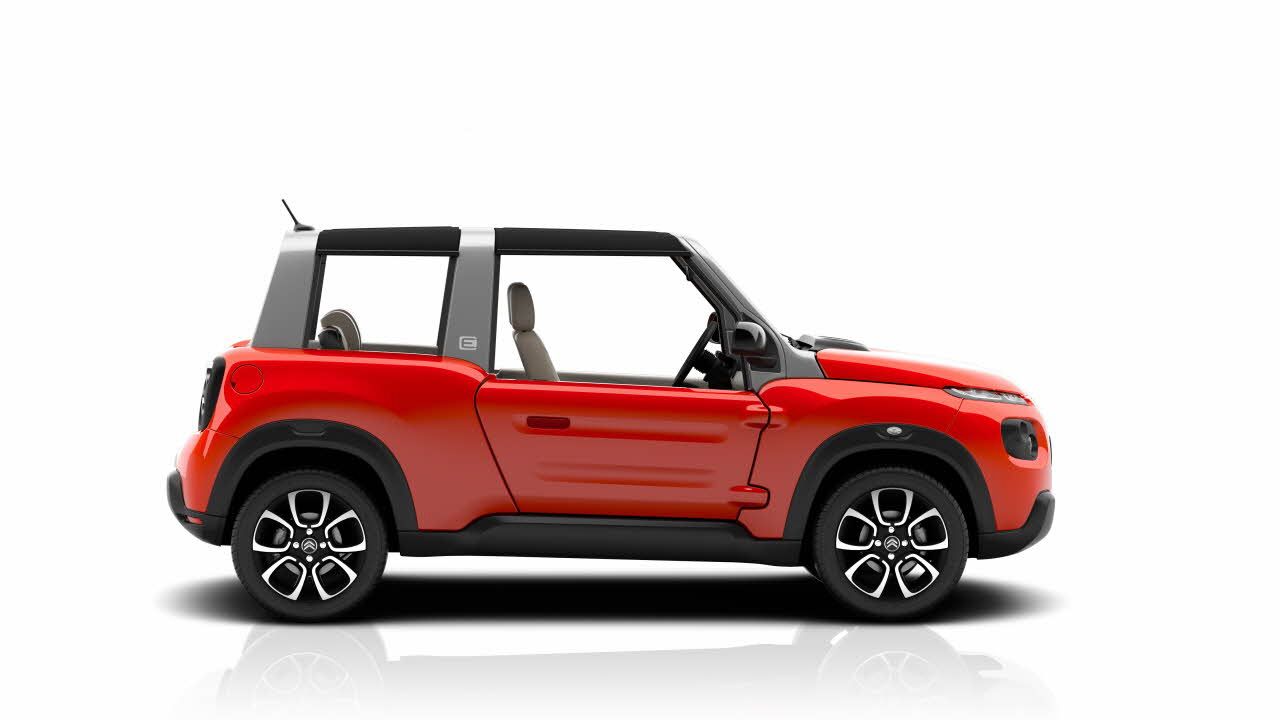Citroen->ke22 produced more than 144,000 examples of the versatile Mehari between 1968 and 1988. The utility vehicle served many purposes, including military use by the French, while civilians loved it for its off-road->ke5049 capabilities. It was the ultimate off-road, beach-goer. Citroen seems to be somewhat obsessed with this piece of its past, as it keeps looking back to it for inspiration for its modern day vehicles.
If you look at the C4 Cactus, it clearly shares some of the design characteristics, and let’s not forget the Citroen Cactus M Concept that we recently snagged photos of at the 2015 Frankfurt Auto Show.->ke235 Now, Citroen is at it again – paying tribute to the Mehari and borrowing from its design characteristics yet again. This time, however, it isn’t a Cactus model or a concept. This time, Citroen has even resurrected the Mehari name, calling its new electric vehicle the Citroen E-Mehari.
Citroen says the E-Mehari is “incomparable, silent, and stress-free” and it “stands apart as a free spirit in the automotive market.” The E-Mehari does have some interesting styling and does have a “fun” look to it, and it is said to confirm Citroen’s interest in developing cheery, optimistic vehicles that are entirely different from the rest. You could say it does cover those bases quite well, as long as you don’t look at some of the other Citroen models anyway.
The E-Mehari isn’t something that would get a lot of traction here in the U.S., but in the French market – the market it is intended for – this little electric->ke1030 four-seater should get quite the following from those who miss that iconic off-roader from the past. The E-Mehari is currently in the middle of its debut to the world, and is on display in Paris until December 11th. That said, let’s take a look and the new E-Mehari and see what this interesting little EV is all about.
Continue reading to learn more about the Citroen E-Mehari.
2016 Citroen E-Mehari
- Make: Array
- Model: 2016 Citroen E-Mehari
- [do not use] Vehicle Model: Array
Exterior
One look at the vehicle, and you can clearly tell it is built by Citroen. Like the Mehari of the past, the body panels of the vehicle are made of plastic. Up front, black inserts surround the dual headlight assemblies – an icon of Citroen design – and the black-painted bumper connects to lower trim that surrounds the body, garnishing the wheel arches and side skirts. To the sides, the door hinges are visible from outside the vehicles, and the doors feature one body line that protrudes from the body and a lower line that is sunk into the door. Side markers rest in the middle of the wheel arch trim over the front wheels.
To the rear, the bumper has the same black paint treatment as the rest of the E-Mehari’s lower extremities. The rear gate is rather bland with a few smooth body lines and a Citroen emblem. The taillights have black-painted inserts that enhance the car’s two-tone color scheme. On top the two roof panels – one over the front seats and one over the rear – are removable, providing an unobstructed view of the sky. Available exterior colors include blue, orange, yellow, and beige, while the removable roof panels can be colored either black or orange-red.
Interior
The only shots we have of the interior happen to share the same view of the sun at high noon, so we can’t elaborate too deeply on the interior at this time. From what we can see, the interior is simplistic, yet elegant. The rear bench seat accommodates two passengers, and from what we can see there are absolutely zero electronics or amenities in the rear – unless you consider seatbelts to fall in that category.
Up front, the simplistic design continues with a nothing-more-than-functional center console. It is thin and mounted in a fashion that leaves a few inches of space between it and the seats. The hand brake is located next to the driver’s leg, and there is no storage compartment to the rear or on the top of the console.
We don’t have a view of the dash, but I suspect it also takes on a rather simple design. A simple radio and instrument cluster is probably about as good as it gets, considering the E-Mehari isn’t exactly a place you would want high-end electronics and gizmos, as – with the exception of the windshield – the vehicle is void of any fixed glass. It should be noted, however, that the roof panels do have fold away glass that allows the side, rear or the entire vehicle to be enclosed. That isn’t the big of a deal, however, as the interior of the E-Mehari is made of plastic-coated fabric that is both durable and waterproof. The interior can be optioned in either beige or a high-tech orange-red, the latter of which includes a funky looking Hibiscus plant pattern that Citroen claims are inspired by water sports.
Drivetrain
So far, we don’t know much about what actually propels the E-Mehari down the road, but we do know it is all-electric. The vehicle was built in partnership with France’s Bollore Group, the company responsible for the Lithium Metal Polymer (LMP) battery that is used to store energy and drive the E-Mehari’s electric motors.
Citroen’s press release gave no indication of battery specifications, but the battery pack is known as a dry battery and isn’t sensitive to weather conditions. The pack can be charged via a 16-amp socket in just eight hours, or 13 hours on a 10-amp domestic socket. With a full charge, the batteries push the E-Mehari to a top speed of 110kph (68 mph) with a range of 200 km (124 miles) when driving in stop and go traffic. We’ll update you with more specifications of the electric motors and batteries as details emerge.
Prices
Citroen has yet to release pricing information for the new E-Mehari, but we can speculate based on some of the brand's other models. The current C4 Cactus goes for £12,990 ($19,715 at current exchange rates), and the C-Zero all-electric goes for £11,995 ($18,205.) To me, the E-Mehari seems similar to a combination of the two (with a better range and top speed than the C-Zero,) so I would speculate a price in the range of £12,000 to £13,500.
Competition
Nissan Leaf
It is a bit difficult to pick out any competitor for a vehicle like the E-Mehari, as there isn’t really another all-electric vehicle out there like it. As far as all-electrics go for daily commuting, my best contender for the E-Mehari is the Nissan Leaf. Granted, it isn’t a beach going, off-road capable machine, but it is all electric and similar in size. The leaf has a range of 107 miles, and top speed comes in at the 100 mph range. That range and top speed puts it right on par with the E-Mehari, but, unfortunately, the lack of a removable top and little off-road capability, the Leaf only really competes when it comes to the daily commute. Will there really be a good competitor for the E-Mehari, outside of its fuel-powered brethren? Well, I guess we’ll just have to wait and see. The Nissan leaf is priced a bit higher than what I think the E-Mehari would go for, starting at $29,010.
Continue reading to learn more about the Nissan Leaf here.
Conclusion
I think the E-Mehari is an interesting vehicle, but it comes off to me as more of a fancy golf cart. That isn’t necessarily a bad thing, though. The original Mehari was offered up quite successfully has a rental car in Hawaii back in the ‘70s and ‘80s. I could see this model being quite popular in resort areas and more tropical areas on this side of the world too. Personally, I think it resembles previous models from Citroen a bit too much, but that’s just me. The E-Mehari will launch in France come spring of 2016, and it will be interesting to see how well it performs once it does. As more images and specifications become available, we’ll update you accordingly.


